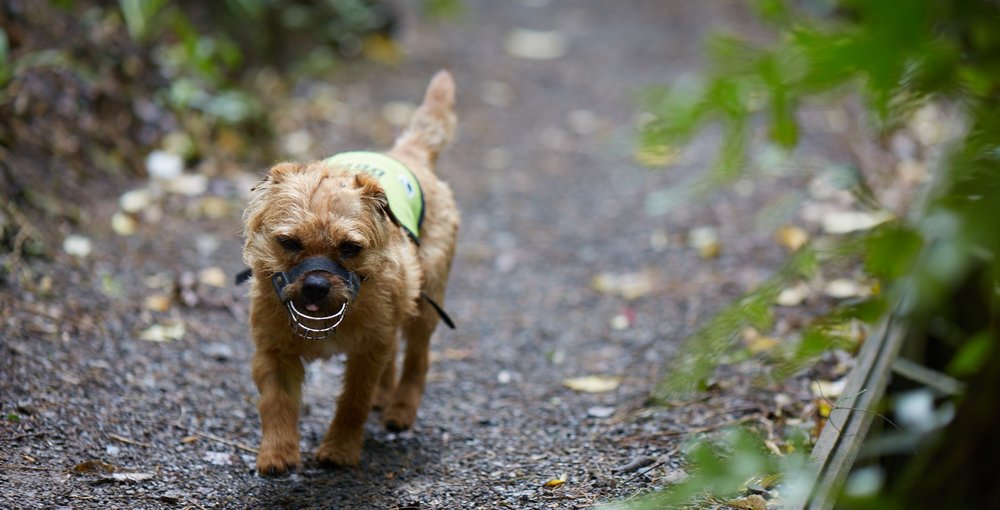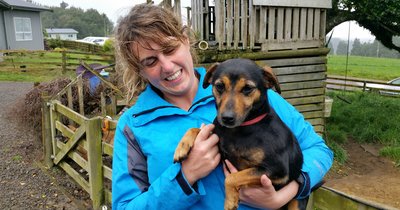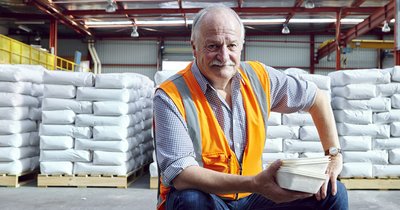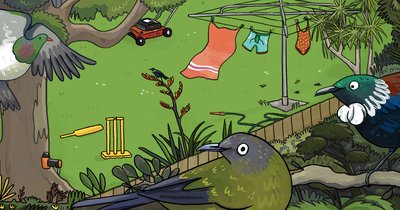Dogs have a pretty sweet reputation as loyal, loving, hard-working, (and undeniably adorable, too). Their charming traits have made them humans’ best friends for millennia, and these same traits are what make them ideal companions for the Department of Conservation (DOC).
Finlay Buchanan, Technical Advisor at DOC, spoke to us about how incredible these conservation dogs are, and just how much they mean to both the Conservation Dogs Programme and the handlers themselves.
Jak the Ratter
You may have heard about Jak the Ratter as he was one of the early stars of the Programme. Jak was one of the very first rodent dogs that DOC ever had, but more importantly he was Fin’s best friend. Fin had run working dogs his entire life, but his previous working dogs were all big and brawny. It was a chance meeting with Jak’s breeder that convinced him to take on a pest detection dog, He told him he should take on a border terrier foxy cross.
“I said, ‘Nah, I’m not interested, I only like big dogs’, but the breeder said that these little dogs have big hearts, “and before I knew it I left the breeder with a pup in my pocket.”
Enter Jak the Ratter.
Both of Jak’s parents were working dogs, so his hard-working disposition was in fact in his blood, and it’s something he’s passed on to his offspring Pai and Piri who follow in their father’s paw prints. Sadly, Jak passed away at 16 which is the average for smaller dogs. His life was shortened by an accident he had at 12 which resulted in the loss of one of his legs.
Over the last three years of his life, he continued on with his quarantine inspections despite this disability. But it wasn’t easy for Jak and the work he needed to get done. “What do you do with a dog that has given you such wonderful service, but who then becomes a real danger to himself? Jak was going blind, lost his hearing, and having him around the other working dogs was a bit of a nightmare.” Jak’s last years were spent in comfort with his vet and her family. Fin says that losing Jak was hard, but taking care of Jak’s puppies with his partner Carol makes it a lot easier.
The close working relationship between handlers and their dogs ends up becoming more than just work. They have to spend so much time getting to know each other to do their jobs well that they end up becoming more than just workmates: they become family. Fin and Jak are a testament to this. When asked about his special relationship with Jak, Fin explains,
“I’ve got a picture of Jak looking at me and it almost brings me to tears with the memories that it conjures. I wouldn’t have the job I have without my dogs.”
Sit, shake a paw, roll over
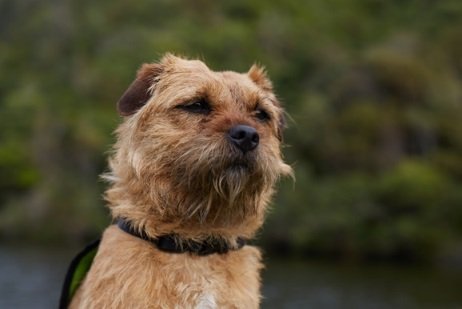 Training times vary for the dogs in the programme. Fin says that Jak was fully certified at 14 months old.
Training times vary for the dogs in the programme. Fin says that Jak was fully certified at 14 months old.
“You get the puppies at 8-10 weeks. That’s the ideal age to take on the puppy to socialise them and give them positive experiences. Their senses are wide open, the biggest chunk of their learning happens in that short space of their lives.”
While they’re in the early stages of training, it’s also important to let them be puppies.
“At about 8-9 months I start the more formal training.” Intensive target specific training comes later, once the puppies have been socialised.
Fin believes that a working dog is a content dog, but he says he lets his dogs run around and be dogs before they start work every day. It’s this puppy play time that helps build the bond between the handlers and their pups, helping handlers to better read them when they’re working.
Fin has been working in the Conservation Dogs Programme since 2001. It’s essentially an extension of the work he used to do with hunting dogs. “My brother is in wild animal control, and he jokes that the pests I hunt are getting smaller and smaller as I get older.” Fin started with goat and deer dogs and moved onto possums, then rats. “I don’t own an Argentine ant dog yet,” but watch this space.
As with most important jobs, there are dangers to consider, especially for four-legged workmates. On the likes of Rangitoto Island, where Fin and his team regularly take their dogs to look for rats and stoats.
“You and your dogs are working over sharp rocks, lava, and barnacles, it is quite treacherous terrain.”
On one job, Fin’s partner Carol’s dog Piri got an infection while she was working in some gorse. “We could see her eye weeping but she kept on working. We knew we had to be there for another three days, and this little dog just kept hunting paying no mind to her injury. That’s dedication.” All dog handlers carry a first aid kit to help their dogs just in case they get hurt while they’re on the job. Fin adds that considering the dangerous work they do, there are remarkably few accidents. “Touch wood.”
The Conservation Dogs and their talented handlers are active all over New Zealand. You might be lucky enough to meet them at wharves, ferry terminals, island and mainland sanctuaries, in the national parks or perhaps even at your local Kiwibank branch so keep an eye out when you're exploring our backyard!
Want to find out more? Stay up to date with the programme by visiting the Dog Programme section on DOC's website or check out Kiwibank’s social media channels.
